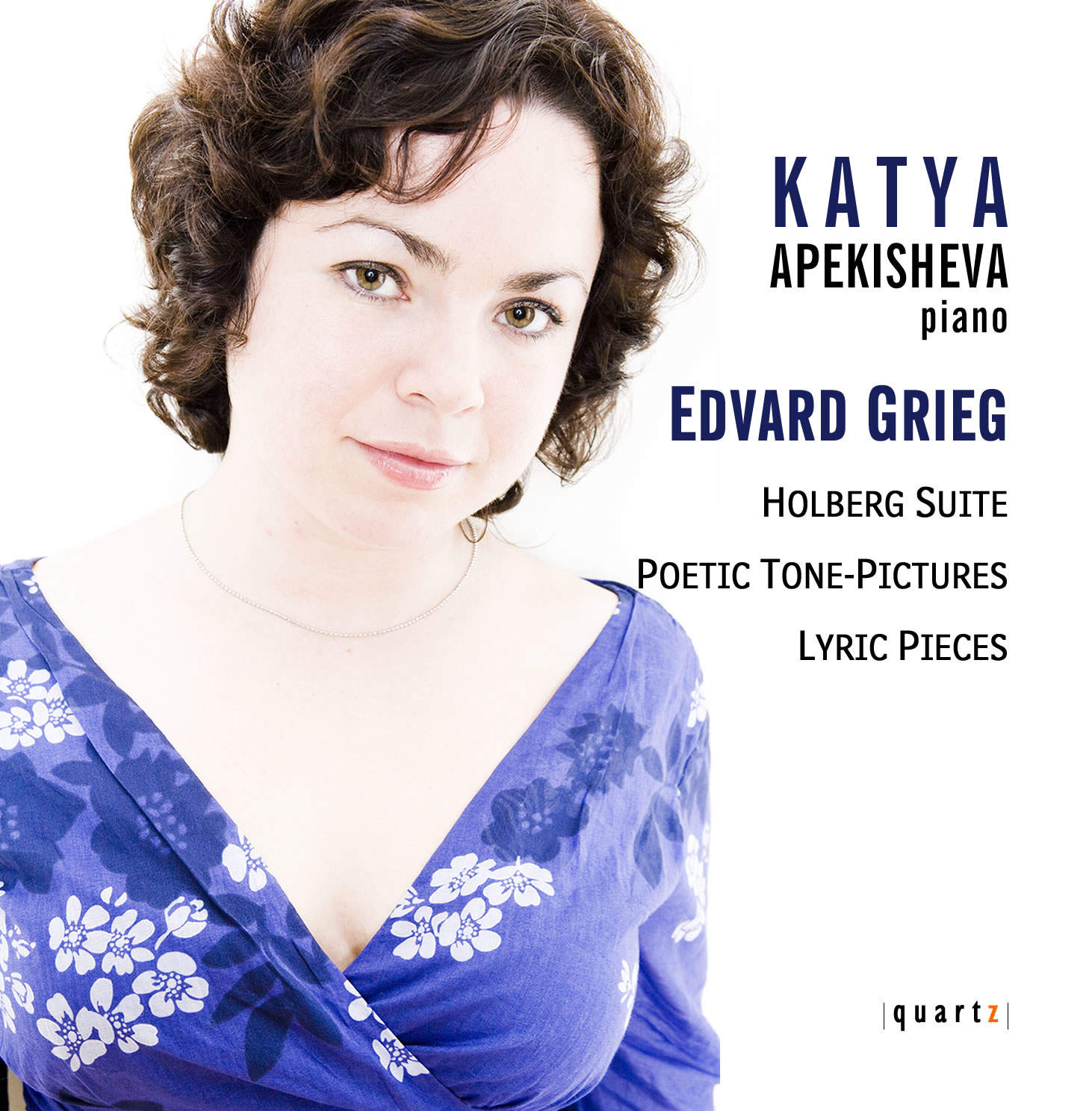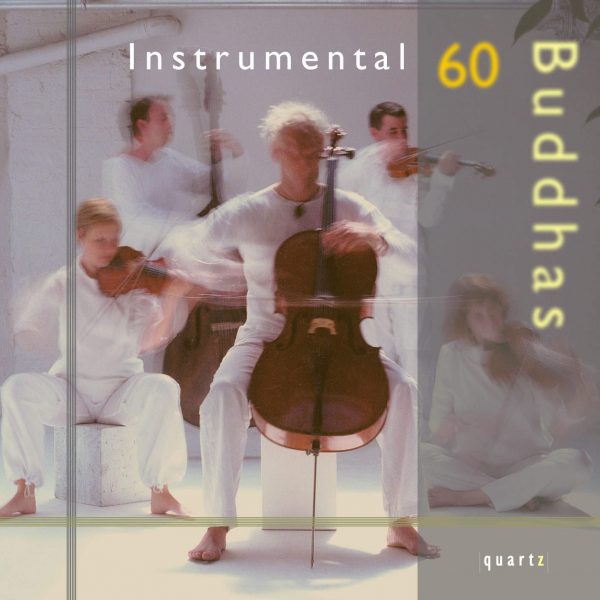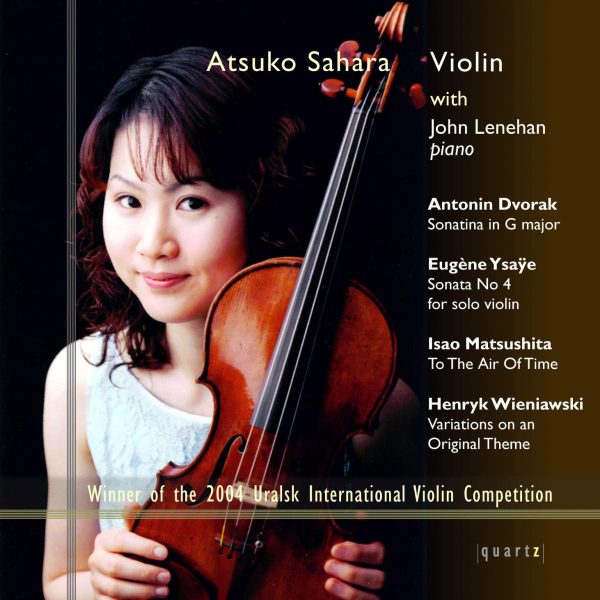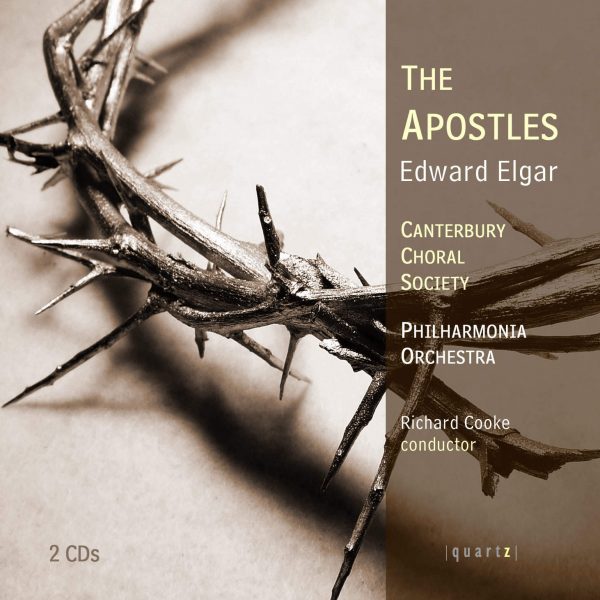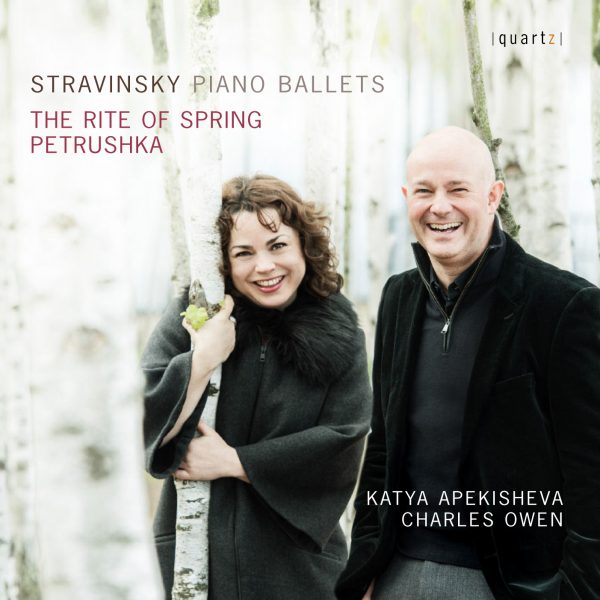Grieg – Piano Music
£4.99 – £11.99
HOLBERG SUITE Op. 40
POETIC TONE-PICTURES Op. 3
From LYRIC PIECES
Gade, Op. 57
To spring, Op. 43
The brook, Op. 62
At your feet, Op. 68
Lonely wanderer, Op. 43
Halling, Op. 47
Album leaf, Op. 47
March of the Trolls, Op. 54
Scherzo, Op. 54
Homesickness, Op. 57
Wedding day at Troldhaugen, Op. 65
Vanished days, Op. 57
Katya Apekisheva, Piano
About This Recording
Although to many Grieg is known primarily for orchestral music and, indeed, orchestral transcriptions of his piano works, in his own lifetime he was known as “The Chopin of the North” for his prolific and widely disseminated output of piano miniatures. At the heart of this body of works are the Lyriske Stykker or Lyric Pieces, many of which can be related to precedents set by Schumann and Mendelssohn, but some of which also foreshadow the music of two of the early 20th-century’s greatest contributors to piano music: Debussy and Ravel.
What is intriguing, however, is to contrast the attitudes towards Grieg held by these two ‘Impressionists’. On the one hand, Debussy dismissed Grieg’s music as giving the listener “the bizarre and uncanny sensation of eating a pink bonbon stuffed with snow”. Yet the open fifths of Grieg’s Bell-ringing, from the Lyric Pieces Op.54 No.6, clearly anticipates similar devices used works such as Debussy’s Cloches à travers les feuilles and La cathédrale engloutie. Ravel, on the other hand, responded to Delius’s assertion that “modern French music was Grieg and Grieg alone, plus the prelude to the third act of Wagner’s Tristan” by saying: “That’s true. We are always very unjust towards Grieg” – perhaps a reference to Debussy’s scathing views. Years later, in 1926, Ravel went further, stating that: “The generation of French composers to which I belong has been strongly attracted to his music. There is no composer to whom I feel a closer affinity – besides Debussy – than Grieg.” It is fascinating to listen to Grieg’s piano works – the Lyric Pieces especially, – bearing in mind that beyond their obvious charms they were to have a substantial influence on the development of piano music.
The Holberg Suite Op.40 for piano was composed by Grieg in 1884 as a commemoration work for the 200th anniversary of the birthday of Ludwig Holberg (1684-1754). Holberg was a Danish-Norwegian playwright whose birthplace, in common with Grieg himself, was Bergen, where the composer premiered the piece. The work was originally entitled Fra Holbergs tid (From Holberg’s time): Suite in the olden style, and Grieg looked to the 18th century, when Holberg was alive, for the inspiration behind the work, so that each movement is based upon the typical dance forms used in the French Baroque suites of Rameau, Couperin and Bach.
Although the Holberg Suite is perhaps better known in Grieg’s own arrangement for string orchestra published in 1885, the keyboard version accentuates the clear contrapuntal lines that relate it to 18th-century precedents. The Preludium is a fine instance of this, its busy texture supporting rather than obstructing both melodic and bass lines in a manner that sounds distinctly Baroque, although the harmony is very much Grieg’s own. Similarly, the Sarabanda combines both Baroque ornamentation and yearning Romantic harmonic progressions; Grieg emulates past models, yet places the piece firmly in his own time. Perhaps the finest Baroque pastiche in the Suite, apart from the final Rigaudon, is the Gavotte/Musette, with its noble character and intricate sequential passagework. It even includes the periodic phrasing and stark dynamic contrasts of the earlier period rather than Grieg’s more usual use of graded expressive markings. In the Air, however, Grieg vents his Romantic inclinations, still including Baroque ornamental gestures but with a sombre, longing quality identifiable in other of his works such as the Peer Gynt Suites. The Rigaudon is a brilliant evocation of 18th-century musical characteristics, with outer sections of sparkling counterpoint framing a Trio of stately, ornamented restraint.
Engaging though the orchestrated version is, it is in this keyboard rendition that the skill of Grieg’s hommage to the past really shines.
Grieg’s Poetic Tone-Pictures, Op.3, were published in 1865 when the composer was just 21. However, despite their early date, the pieces are more taxing for the pianist than many of the Lyric Pieces. Furthermore, even at this point in Grieg’s career he was producing music more challenging and innovative than Debussy gave him credit for. The Tone-Pictures are, admittedly, fairly conventional, but even here there are moments that reveal Grieg’s forward-thinking approach to harmony. In addition to intense chromaticism – a device he always associated with heart-felt emotion – Grieg employs clashing ‘false relations’, such as the juxtaposition of G natural and G sharp in the Piece No.4. The Tone-Pictures are also interesting for their absence of picturesque titles. The overall assignation ‘Poetic’ is suggestive of programmatic content, but, unlike the more explicitly labelled Lyric Pieces, in the Tone-Pictures Grieg only provides expressive markings such as Andante con sentimento to hint at what each ‘picture’ depicts. This, too, indicates a subtlety of approach on Grieg’s part that would later be adopted by the Impressionists.
Grieg produced ten volumes of Lyric Pieces – 66 miniatures in all – the first set, Op.12, issued by the Peters publishing house in Leipzig in 1867, – two years after the Poetic Tone-Pictures – and the last, Op.71, appearing in print in 1901. The pieces enjoyed widespread popularity across Europe and have become staples of the piano repertoire, providing, in Grieg’s own words, “an intimate slice of life”.
In 1885 Grieg and his wife Nina spent the spring in Denmark, where the composer sketched much of the third book of Lyric Pieces, Op.43, which he wrote out once back in Norway that summer. The volume includes the wistful depiction of a Lonely Wanderer (No.2), its poignant solitude contrasting with the sense of hope, passion and fecundity in To Spring, Op.43 No.6. To Spring is one of the most famous of the Lyric Pieces, owing in part to a well-loved orchestral version of the work.
From volume four, Op.47, come the charming nostalgia of Album Leaf (No.2) and the vibrant Halling (No.4). The halling is one of several Norwegian dance types on which Grieg drew throughout his career, its triple-time equivalent being the springar. Many of the Lyric Pieces possess the folk-like quality that characterises so much of Grieg’s output, although none of them features an existing folk melody. Rather, Grieg imbues his music with folk-like inflections to create a traditionally Nordic sound, while simultaneously exploring the harmonic implications of these melodies, a process he described as “trying to express the hidden harmonies in our folk music”. In Halling, the use of fifths in the bass mimics the distinctive sound of Norway’s hardingfele or Hardanger fiddle, a folk violin from western Norway which usually has four strings above the fingerboard and four to five sympathetic strings underneath. Another Halling appears in the final volume of the Lyric Pieces, Op.71 No.5. Grieg’s interest in folk music deepened in 1891 after direct exposure to authentic renditions of his native folk song, untouched by Western culture. This experience inspired him to write volume five of the Lyric Pieces, Op.54, from which comes the folk-like Scherzo.
Vanished Days, the first of the sixth volume, Op.57, is one of the darkest and most emotionally complex pieces included here. Its initially sombre harmonies and turbulent piano texture suggest empty desolation, yet this mood is juxtaposed almost incongruously with the jovial, harmonically mercurial central section. In lighter vein is Gade, Op.57 No.2, in which Grieg conjures up an intimate portrait of one of his friends, the Danish composer Niels Gade (1817-1890). It was Gade who, during Grieg’s sojourn in Copenhagen in the early 1860s, offered him support and advice; the piece conveys Gade’s warm integrity as well as alluding to his scholarly nature with canonic writing.
Also from Op.57 comes Homesickness, a remarkable achievement for its Impressionistic, modal writing, rhythmic fluidity and inventive harmony, all of which anticipates the piano works of Debussy, whose music Grieg described in fulsome terms in a letter written to M.D. Calvocoressi in May 1903. Grieg perceived “the deep seriousness that inspires this artist. It is precisely this seriousness – which he mistakenly claims to be absent from my music – that attracts me to him and that I myself strive for in my work.” In criticising Grieg’s music, Debussy had perhaps failed to distinguish between seriousness of purpose and seriousness of tone. While works such as The Brook, Op.62 No.4 – full of bubbling semiquavers – are undoubtedly picturesque, Grieg’s intent when composing them was sincerely earnest and musically rigorous, rather than trite or perfunctory. Indeed, the deft modulations of the piece, though effortless-sounding, demonstrate Grieg’s considerable harmonic agility.
Wedding Day at Troldhaugen, Op.65 No.6, one of Grieg’s most popular piano works, was written in 1897 during an otherwise fallow period in his career, when he struggled to find inspiration. Grieg told his Danish friend C.F.E. Horneman how he “had done nothing, save for the so-called Lyric Pieces which swarm around me like fleas and lice out in the country”. Despite the negative connotations of this statement, the piece is full of rustic joie de vivre, reminiscent of Halling, but with a nostalgic central section. Originally called The well-wishers are coming, the piece was renamed after Grieg and his wife Nina celebrated their Silver Wedding anniversary in 1892. Troldhaugen, meaning “The Troll’s Hill” was their purpose-built villa; both Grieg and Nina were diminutive and humorously referred to themselves as “the Trolls”. March of the Trolls, Op.54 No.3, paints a more sinister picture, though with an affectionate middle passage. Aside from Grieg’s European tours, Troldhaugen was their base from 1885 until the composer’s death.
From Op.68 comes At Your Feet (No.3) full of contented romantic sentiment with a more varied, passionate central section. Summer Evening, Op.71 No.2, is the latest of the works represented here, and indeed possesses a forward-looking harmonic scope, with its sudden, luminous tonal shifts suggesting final glimpses of the sun’s rays at the close of the day. Despite Debussy’s own, undeniable, compositional brilliance, his dismissal of Grieg’s works as mere confections may have been short-sighted; on closer inspection, the progressive qualities identified by Ravel emerge, transforming these “bonbons” into a feast.
© Joanna Wyld, 2007
Track Listing
-
Edvard Grieg
- Holberg Suite (i) Preludium
- Holberg Suite (ii) Sarabanda
- Holberg Suite (iii) Gavotte
- Holberg Suite (iv) Aria
- Holberg Suite (v) Rigaudon
- Poetic Tone Pictures - Allegro ma non troppo
- Poetic Tone Pictures - Allegro cantabile
- Poetic Tone Pictures - Con moto
- Andante con sentimento
- Poetic Tone Pictures - Allegro moderato
- Poetic Tone Pictures - Allegro scherzando
- Lyric Pieces - Gade
- Lyric Pieces - To Spring
- Lyric Pieces - The Brook
- Lyric Pieces - At Your Feet
- Lyric Pieces - Lonely Wanderer
- Lyric Pieces - Halling
- Lyric Pieces - Album Leaf
- Lyric Pieces - March of the Trolls
- Lyric Pieces - Scherzo
- Lyric Pieces - Homesickness
- Lyric Pieces - Wedding Day at Troldhaugen
- Lyric Pieces - Vanished Days
